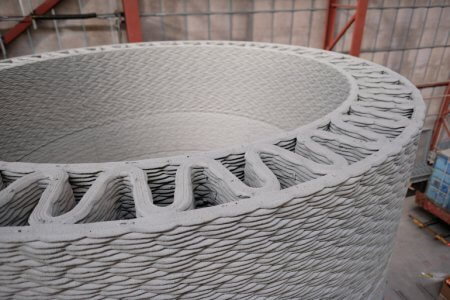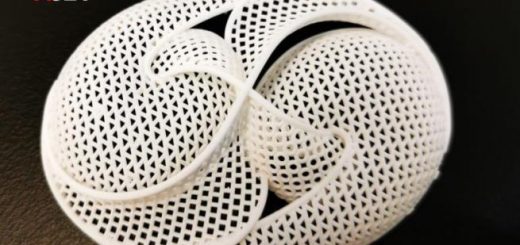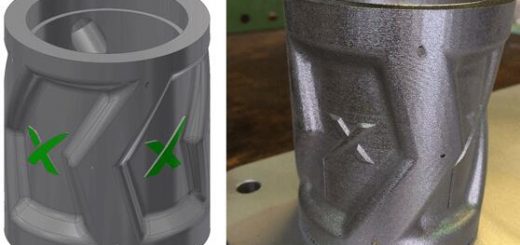GE Renewable Energy is Experimenting with 3D-Printed Turbine Bases for Taller Towers
GE Renewable Energy, COBOD and LafargeHolcim announced today that they will partner to co-develop wind turbines with optimized 3D-printed concrete bases, reaching record heights up to 200 meters. The three partners will undertake a multi-year collaboration to develop this innovative solution, which will increase renewable energy production while lowering the Levelized Cost of Energy (LCOE) and optimizing construction costs. The partners will produce ultimately a wind turbine prototype with a printed pedestal, and a production ready printer and materials range to scale up production. The first prototype, a 10-m tall tower pedestal, was successfully printed in October 2019 in Copenhagen. By exploring ways to economically develop taller towers that capture stronger winds, the three partners aim to generate more renewable energy per turbine.
 Image via GE
Image via GE
Building on the industry-leading expertise of each partner, this collaboration aims to accelerate the access and use of renewable energy worldwide. GE Renewable Energy will provide expertise related to the design, manufacture and commercialization of wind turbines, COBOD will focus on the robotics automation and 3D printing and LafargeHolcim will design the tailor-made concrete material, its processing and application.
“Concrete 3D printing is a very promising technology for us, as its incredible design flexibility expands the realm of construction possibilities. Being both a user and promoter of clean energy, we are delighted to be putting our material and design expertise to work in this groundbreaking project, enabling cost efficient construction of tall wind turbine towers and accelerating access to renewable energy,” explained Edelio Bermejo, Head of R&D for LafargeHolcim.
Henrik Lund-Nielsen, founder of COBOD International A/S added: “We are extremely proud to be working with world-class companies like GE Renewable Energy and LafargeHolcim. With our groundbreaking 3D printing technology combined with the competence and resources of our partners, we are convinced that this disruptive move within the wind turbines industry will help drive lower costs and faster execution times, to benefit customers and lower the CO2 footprint from the production of energy”.
“3D printing is in GE’s DNA and we believe that Large Format Additive Manufacturing will bring disruptive potential to the Wind Industry. Concrete printing has advanced significantly over the last five years and we believe is getting closer to have real application in the industrial world. We are committed to taking full advantage of this technology both from the design flexibility it allows as well as for the logistic simplification it enables on such massive components”, said Matteo Bellucci, Advanced Manufacturing Technology Leader for GE Renewable Energy.
Traditionally built in steel or precast concrete, wind turbine towers have typically been limited to a height of under 100 meters, as the width of the base cannot exceed the 4.5-meter diameter that can be transported by road, without excessive additional costs.
Printing a variable height base directly on-site with 3D-printed concrete technology will enable the construction of towers up to 150 to 200 meters tall. Typically, a 5 MW turbine at 80 meters generates 15.1 GWh annually. In comparison, the same turbine at 160 meters would generate 20.2 GWh, or more than 33% extra power.
Source: GE




Recent Comments